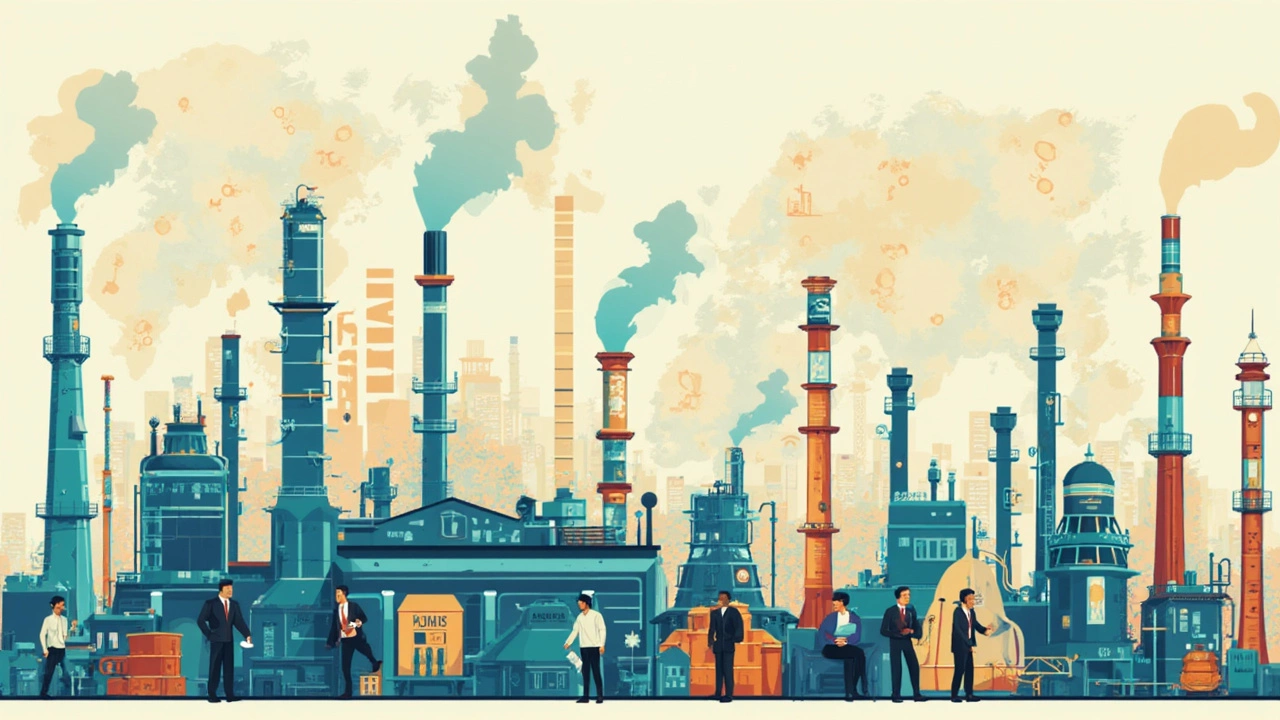Global Chemical Market
When looking at the global chemical market, the worldwide network of chemical production, trade, and consumption that fuels dozens of industries. Also known as chemical industry, it links raw feedstocks to finished products across sectors like plastics, pharma, and agriculture. In this ecosystem, the plastic industry, a dominant consumer of petrochemical resins and polymer additives and the pharmaceutical sector, producer of specialty chemicals for medicines and vaccines stand out as major demand drivers.
The global chemical market isn’t just about volume; it’s shaped by three interconnected forces. First, resource availability – access to crude oil, natural gas, and renewable feedstocks determines how many tons of basic chemicals can be made. Second, regulatory pressure – stricter emissions rules and safety standards push companies toward greener processes. Third, technological innovation – advances in catalysis, bio‑based routes, and digital twins boost efficiency and open new product lines. These forces create a feedback loop: tighter regulations spark R&D investment, which fuels new product categories that further reshape demand.
Key Drivers and Emerging Trends
One clear trend is the shift from traditional petrochemicals to specialty chemicals, high‑value compounds tailored for specific applications like electronics, healthcare, and clean energy. Specialty chemicals command higher margins and are less vulnerable to price swings in crude oil. Another trend is the rise of circular chemistry, processes that recycle plastics, capture carbon, and reuse waste streams. Companies that embed recycling into their supply chain can meet both regulatory mandates and consumer expectations for sustainability.
Geographically, Asia‑Pacific continues to dominate production capacity, especially China and India, while North America and Europe focus on high‑tech specialty and bio‑based chemicals. This geographic split creates distinct supply‑chain dynamics: large‑scale bulk chemicals move across oceans in massive tankers, whereas specialty chemicals travel in smaller, temperature‑controlled shipments. Understanding these logistics is essential for anyone managing inventory or planning market entry.
Supply‑chain resilience also matters more than ever. The 2020‑2022 disruptions taught firms that reliance on a single feedstock source can cripple operations. As a result, many players are diversifying into renewable feedstocks like bio‑ethanol and lignocellulosic biomass. This diversification lowers risk and aligns with ESG goals, which investors now weigh heavily when allocating capital.
Finally, digital transformation is turning the chemical industry into a data‑rich environment. Real‑time monitoring, predictive maintenance, and AI‑driven demand forecasting are part of the new normal. These tools help firms optimize plant runs, reduce waste, and respond faster to market signals—whether the signal comes from a surge in electric‑vehicle battery demand or a new pharmaceutical breakthrough.
All these pieces—resource dynamics, regulation, innovation, geography, resilience, and digital tools—interlock to shape what the global chemical market looks like today and where it heads tomorrow. Below you’ll find a curated set of articles that dive deeper into each of these aspects, from plastic production trends to pharma chemical breakthroughs, giving you actionable insights to navigate this complex landscape.
